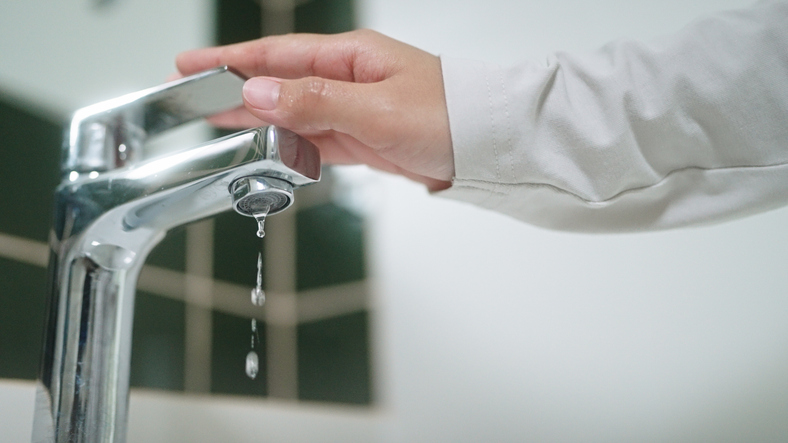Introduction
Bathroom tap flow problems may seem like a minor inconvenience, but they can lead to bigger issues, particularly when they affect your monthly water bill. This subtle plumbing problem reduces flow efficiency, extends the time required for everyday tasks, and causes households to waste more water unintentionally. Whether you’re brushing your teeth, washing your hands, or cleaning the sink, low water pressure in bathroom taps makes these simple routines take longer and consume more water overall. Understanding the connection between this issue and increased utility costs is essential for running a cost-effective, eco-conscious home. Addressing the problem early helps you avoid unnecessary expenses, reduce water waste, and prevent long-term plumbing damage.
1. How Low Water Pressure Increases Water Usage:
Low pressure makes simple tasks inefficient. For example, when rinsing soap or toothpaste, you may leave the tap running longer to get the job done. Over time, those extra seconds add up to gallons of wasted water. What’s worse is that people may repeat these tasks, further increasing their water consumption. In many cases, homeowners don’t even realize they’re using more water. This prolonged usage results in a spike in your monthly water bills. Fixing pressure issues quickly restores water efficiency and lowers waste. Poor water pressure often encourages the use of alternative fixtures like showers or kitchen sinks, further compounding the inefficiency in household water consumption.
2. The Role of Sediment and Mineral Buildup:
One common cause of low bathroom tap pressure is sediment buildup. Minerals like calcium and magnesium often accumulate in aerators and pipes, especially in areas with hard water. These blockages reduce the flow path, leading to reduced pressure. The result? You use more water while achieving less. Additionally, sediment can affect the performance of hot water systems, making showers and taps use more water inefficiently. Regular flushing, descaling, or installing water softeners can help preserve pressure and keep bills in check. Neglecting to address these build-ups can also lead to corroded pipe interiors, further reducing the diameter and pressure.
3. The Connection Between Leaks and Low Pressure:
Hidden leaks in pipes can create noticeable pressure drops. Even small pinhole leaks reduce the force of water reaching your bathroom taps. As a result, you end up using more water to compensate for weak flow. Leaks may also damage the surrounding structure, leading to expensive repairs. The bigger concern is that while you’re paying for water, a portion is never reaching the tap. Detecting and fixing leaks ensures water is efficiently delivered, preventing billing surprises and preserving water. Many leaks remain unnoticed until substantial damage has occurred, so early detection through professional inspection is crucial.
4. Faulty Fixtures Can Drain Your Budget:
Aging or faulty bathroom tap fixtures often fail to maintain proper water pressure. Internal valve wear, corrosion, or improperly sized hardware restricts flow and wastes water. Some older taps may leak while in use or continue dripping even when turned off, compounding the problem. These small inefficiencies contribute to higher water usage. Replacing outdated fixtures with modern, water-saving ones can improve pressure while using less water per task. It’s a simple upgrade that boosts performance and slashes costs. Moreover, newer models often come with certifications for water efficiency, offering an extra layer of assurance.
5. The Importance of Professional Plumbing Inspections:
Homeowners often overlook the need for professional plumbing maintenance. Licensed plumbers can diagnose low-pressure issues, from corroded pipes to pressure regulator failures. A professional inspection helps uncover hidden problems that could cost hundreds over time if ignored. They may also recommend upgrading your plumbing system to optimize pressure and reduce consumption. Regular maintenance ensures that your bathroom taps perform efficiently and helps control unnecessary spikes in your water bills. Beyond just diagnostics, professionals bring the tools and knowledge to implement long-lasting solutions that DIY methods may not address effectively.
6. How Low Pressure Affects Water Heater Efficiency:
Low water pressure doesn’t just influence cold water taps—it significantly affects your water heater’s performance. When pressure is inadequate, heaters take longer to fill, causing longer wait times and higher energy usage. You may also run your tap longer while waiting for hot water, increasing overall water waste. Additionally, sediment that affects pressure can build up in heaters themselves, reducing capacity and heating efficiency. Servicing your heater regularly and ensuring consistent water pressure helps maintain both energy and water efficiency, impacting both your utility bills.
7. Behavioral Changes That Increase Waste:
When homeowners experience low tap pressure, they often develop habits that unintentionally waste water. For example, they may leave the tap running while waiting for pressure to improve or switch to another tap that uses more water. These changes seem minor, but can significantly increase their water bills. Understanding the root cause of pressure issues can stop wasteful behaviors before they become routine. Education and awareness among household members can also contribute to reduced consumption and greater efficiency.
8. Long-Term Financial Impact and Environmental Costs:
Though it may not seem urgent, low water pressure can cost you significantly over time. Increased water usage leads to higher bills, frequent plumbing repairs, and greater strain on your local water supply. From an environmental standpoint, excess water waste contributes to resource depletion and higher municipal treatment costs. Addressing low pressure not only benefits your household budget but also contributes to a broader effort of water conservation. In a time of growing environmental concern, small fixes at home can make a big difference.
Low water pressure in bathroom taps is more than a daily nuisance—it’s a hidden factor behind rising water bills. Whether caused by sediment buildup, leaks, outdated fixtures, or poor maintenance, pressure issues lead to inefficient water use. The longer these problems go unresolved, the more money and water are wasted. Proactively addressing low water pressure not only saves you money but also helps reduce your environmental footprint. Restoring proper tap function enhances both home comfort and operational efficiency. For long-term savings and a greener future, take action at the first sign of water pressure issues.
Are you struggling with low water pressure in bathroom taps? Call our experts at Plomero in Phoenix at (602) 730-4663 for expert solutions that improve flow, cut waste, and lower your monthly water bills today!
📌 Phoenix’s Reliable Plumbing, Heating & AC Service You Can Trust!



